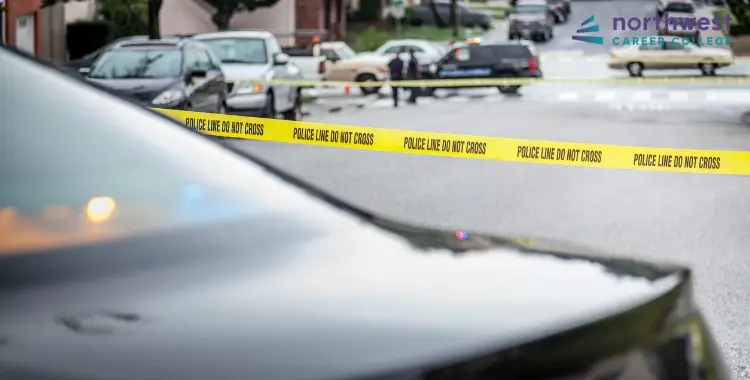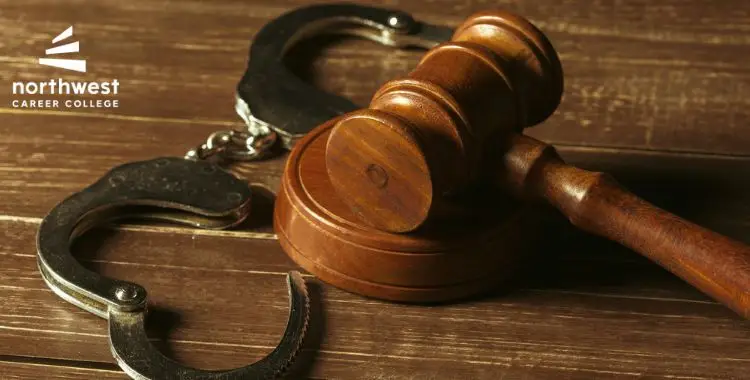The Role of Forensics in Modern Criminal Investigations
- July 4, 2025
- 10.3k views
- 6 min read

Have you ever watched a show like CSI or Law and Order and wondered, “What exactly is the role of the forensic scientist who comes to inspect a crime scene?” If so, this article is for you.
We will be exploring the history of forensics in criminal investigations, going over some basics about techniques and technology used in the field, and discussing some real-life applications of forensics in criminal investigations.
Table of Contents
Forensics Fundamentals
Forensic science involves the scientific analysis of evidence collected at crime scenes. Although it has not always been called forensic science, this practice has a long history dating back centuries before the advent of modern law enforcement. In the modern era, forensic science has become an increasingly vital tool for law enforcement agencies.
Forensics helps law enforcement by providing a precise and objective analysis of evidence at crime scenes. It assists in identifying suspects, verifying timelines, and understanding the circumstances of a crime.
Historically, much of the evidence found at crime scenes was observational in nature, assessed by the human eye directly. Now, it is standard practice to use advanced techniques such as fingerprinting, DNA testing, chemical analysis, and more when assessing physical crime scenes.
Forensic science is a supplement to traditional investigative methods and not a replacement. Law enforcement officials combine traditional investigative methods, such as interviews and surveillance, with forensic science to ensure a comprehensive approach and the most accurate investigation outcomes. Forensic science is most effective when it supports and validates the conclusions drawn from witness statements and other evidence.
Forensic Techniques and Technologies
The most common forensic techniques used today are fingerprinting DNA analysis, and ballistics.
Fingerprinting involves matching unique patterns and fingerprints from those found at the crime scene to those on record in various law-enforcement databases. Fingerprinting is one of the oldest forensic techniques, but it continues to be used as it remains effective.
DNA analysis is relatively new compared to fingerprinting and can also help identify individuals who may have been present at a crime scene. This involves comparing DNA found at a crime scene (typically in blood, saliva, hair, semen, or other samples) with DNA profiles in law enforcement databases. DNA is now frequently collected from individuals suspected of or convicted of crimes.
Ballistics analysis examines firearms and ammunition linked to crimes. It does not identify individuals present at a crime scene, but it can link specific ammunition used in perpetrating a crime to a specific firearm. If that firearm can then be linked through purchase records, fingerprints, or DNA to an individual, then it can be used to establish an individual’s presence at a crime scene.
Most recently, advanced technologies, such as artificial intelligence, have begun to change how forensic science is executed. AI can process vast amounts of data quickly and is especially good at pattern recognition. AI has already made forensic analysis more efficient and accurate and will likely be used significantly more. While there are risks associated with using such technology, the imperative will be to deploy AI and mitigate those risks along the way due to the significant benefits it provides.
Applications of Forensic Science
What are some real-world examples of the applications of forensic science?
One of the most notorious examples is the O.J. Simpson case. In that case, DNA evidence was crucial in linking him to the crime scene. However, he was ultimately acquitted due to a successful defense by his attorney that the evidence was compromised by mishandling, and the DNA of the actual killer was lost during processing.
Another example is the Casey Anthony trial. In this case, although there was significant evidence suggesting that Casey Anthony had murdered her daughter, Kaylee, there were key pieces of forensic evidence that were unavailable to support the prosecution’s case. For example, hair samples found in the trunk of her car that allegedly belonged to her daughter lacked the follicle and, therefore, could not be conclusively identified as her daughter’s hair.
Although the forensic evidence was insufficient to yield a conviction in these two high-profile cases, it often provides irrefutable proof of a suspect’s involvement in a crime. It can secure convictions and ensure justice for victims and their families.
In addition, forensic science can also be used to identify victims as opposed to perpetrators of crimes. Sometimes, victims are unrecognizable after crimes committed against them or severe accidents or other disasters. In these cases, forensic science can confirm a victim’s identity and provide closure for families. This can also help advance legal proceedings related to the proper administration of victims’ estates.
Challenges and Limitations of Forensics
As mentioned above, when describing the O.J. Simpson case, one of the major challenges with forensic science is allegations of sample contamination. Contamination of samples can lead to misleading results and can compromise the accuracy and credibility of forensic analysis. This is why proper handling of samples by law enforcement professionals is critical to the success of forensic science.
It is also important to note that forensic science is not a crystal ball. The evidence available may not be sufficient to determine guilt or innocence in a crime. Members of law enforcement must acknowledge the limitations of forensic science so that investigations remain honest and the criminal justice system maintains its credibility.
Related Post: 6 Common Myths And Misconceptions About Forensic Science
Future of Forensics: Innovations and Expectations
As described above, forensic science will likely be significantly impacted by the advent of artificial intelligence. The applications of AI in data analysis will undoubtedly be significant in ways that we cannot yet anticipate. One example that is already in practice is the use of artificial intelligence to analyze large quantities of video and audio data to identify criminal activity and locate suspects using facial recognition software.
Additionally, digital forensics will continue to develop as an emerging subfield within forensic science. As the world continues to move more information onto electronic devices and more crimes are committed digitally, digital forensics will be increasingly important.
Innovations are expected to enhance forensic capabilities, making investigations faster, more accurate, and adaptable. It is likely that advanced forensic techniques will help solve cold cases that previously could not be solved. It also is likely that the overall judicial process will be enhanced due to improved accuracy and fairness within the system.
Although it is always important to tread carefully when adopting new technologies, to ensure they do not have unintended negative consequences, there is no doubt that there are significant upside possibilities. It will be exciting to observe the evolution within the field over the next several decades.



